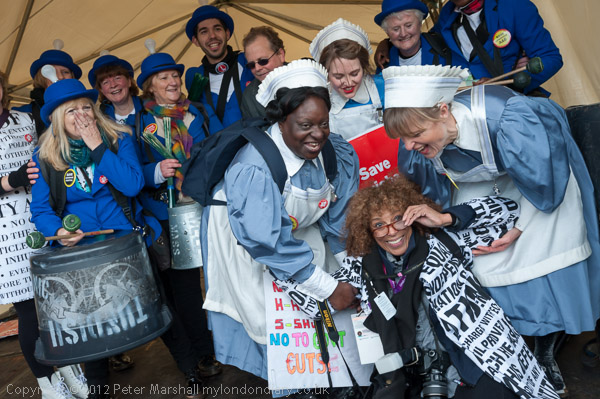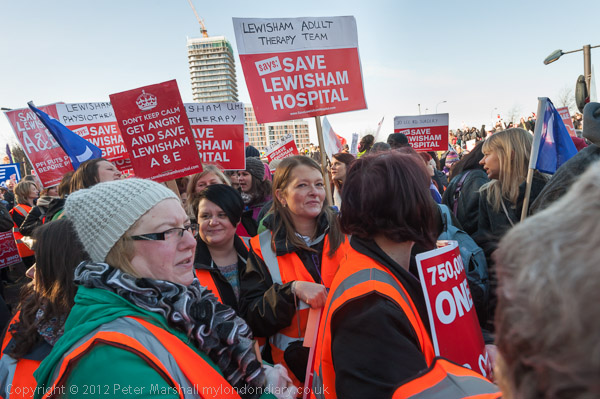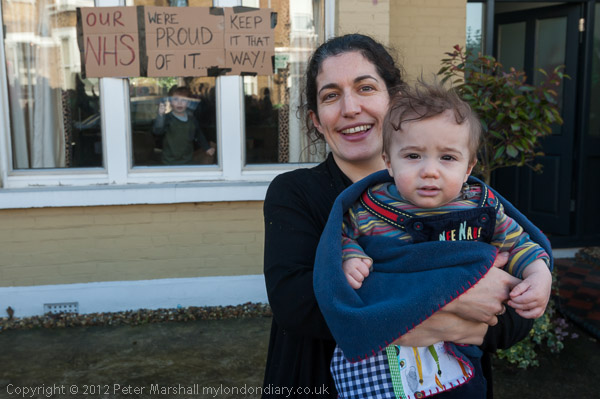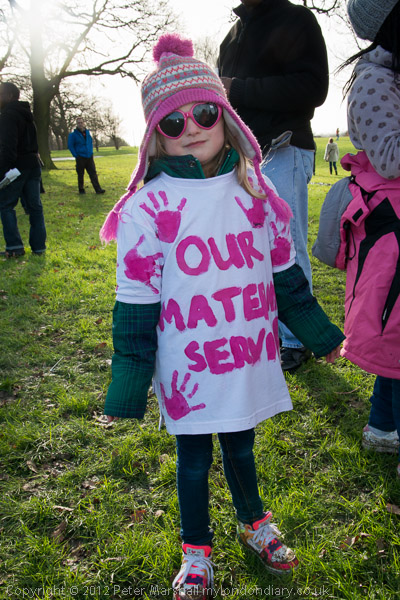The NPR ‘the picture show’ has an interesting story What It Feels Like To Be Photographed In A Moment Of Grief about a photograph of a woman praying in front of a candle and statue of the Virgin Mary outside the St. Rose of Lima church in Newtown, Conn., on the day of the school shootings there, taken by AFP photographer Emmanuel Dunand.
The woman contacted NPR after they ran the picture, identified herself and wrote that although it was a beautiful image and she wasn’t asking for it to be taken down, she “would like to make a point about responsible journalism, it would have been nice if someone could have asked my permission.”
The photographer’s response was that he thought that in the situation, leaving her alone was the most respectful thing to do. I’m fairly convinced that in the circumstances I would have come to the same decision.
There are I think several things that are not really brought out in the short feature or really in the 140 comments people had made on it by the time I read it, and also it connects with something I was thinking about writing about a small incident when I was taking pictures last Saturday.
There is a sense that the picture in question is not really a picture of a particular woman, who is hardly recognisable in the image, her face largely covered by hair and her hands far more important in the image. This is a picture which gains from being generic, from expressing the feelings of many rather than being an image of a particular person.
The NPR talked to Kenny Irby of The Poynter Institute, who gave what I think was a very confusing answer about the two benefits of photographers introducing themselves and interacting with their subjects. It showed a complete failure to understand the difference between news and features, perhaps surprising coming from a leading journalism school. It isn’t as Kenny Irby says ‘unfortunate‘ that the AFP does not have a policy requiring photographers to ask for subject’s names when they are photographed in public places, it is very much at the foundation of news photography.
The woman in the picture is quoted as saying “all of a sudden I hear ‘clickclickclickclickclick’ all over the place. And there are people in the bushes, all around me, and they are photographing me, and now I’m pissed. I felt like a zoo animal.” I don’t know how accurate a description that was, but it shows that there were many other photographers as well as Dunand involved, and it obviously can be very disturbing and intimidating to be surrounded in this way. But this was a very public event, in a place ‘packed with local residents and the media’ and the attention she got was inevitable. Hers was a private grief but she was expressing it in a very public place and in a way that was certain to attract attention.
Her final sentence in the quote was perhaps unfortunate. Zoo animals often come to welcome visitors and generally don’t have strong feelings against being photographed, often playing up for the camera. It’s one reason why I don’t much like zoos and have seldom photographed in them. And though I don’t mean to suggest that she was acting for the camera, many people – even in distressing situations – do so. As of course many people including Susan Sontag have pointed out.
News photography is sometimes tough. I’ve at times photographed through tears and I think all good photographers ever who photograph difficult events will have too. But like Dunand who commented “all you want to do is put down flowers, you don’t want to take photos” we have a job to do. He is also reported as saying that ‘if he sensed that someone was bothered by the camera, he simply put it down’ and I think most professionals would do the same. But of course it may well not have been the click of his camera that disturbed.
There are many times when I start taking a picture on my own and find myself surrounded by a crowd. I don’t like working with a pack of other journalists, and when I feel the shoulders pressing against mine I always know I’m in the wrong place – and after I’ve taken my picture try to move away. Many events now we have far too many people with cameras trying to photograph, and those who generally behave the worst towards both the subjects and other photographers are generally not the professional photographers present.

A photocall -which I often avoid – but people often want
But there are times when I think it is right to ask and I do. One happened last Saturday, when I was photographing the start of the large march to save the hospital in Lewisham, one of the most successful, well-run and needed in the country, threatened simply because other hospitals have huge debts arising from the policy of a former government – the private finance initiative. Closing Lewisham wouldn’t even do much – if anything – to solve the financial problem and it is more of a human sacrifice demanded by the current government -both metaphorically and literally, as its closure would lead to excess deaths among the sick and injured in the area.

People waiting for the march to start – of course I didn’t ask
I was photographing one of the local MPs and some of the senior hospital staff at the front of the march when one of the march stewards asked me if I had seen a family taking part with a young child in a pram who was on a drip. It would he said, make a good picture. The family were on the pavement only a couple of yards from the head of the protest in a very public place, and it would have been possible to photograph them without asking, but I felt that it would be unduly intrusive to do so – I needed to get very close. I went up to them and asked. They said no. I didn’t take the picture, though I think it might have been an image that would have dramatised the protest and perhaps made some front pages.

This woman and children were watching the protest – and I asked permission
Of course I did take many other pictures. There were only two others where I felt I needed to ask permission, both involving people not actually taking part in the protest. One had no problems, and in the other one of the two people ran away while the other was happy to be photographed. Of course I did talk to many other people while I was taking their pictures – particularly to the parents of the children I photographed, but it wasn’t a matter of asking permission – this was a situation where permission could be assumed and almost everyone was pleased to be photographed (and some demanded it!)

I talked to the people while taking pictures – but permission was implied.
More of my pictures and story at Save Lewisham Hospital.
________________________________________________________
My London Diary : Buildings of London : River Lea/Lee Valley : London’s Industrial Heritage
All photographs on this and my other sites, unless otherwise stated are by Peter Marshall and are available for reproduction or can be bought as prints.
To order prints or reproduce images
________________________________________________________